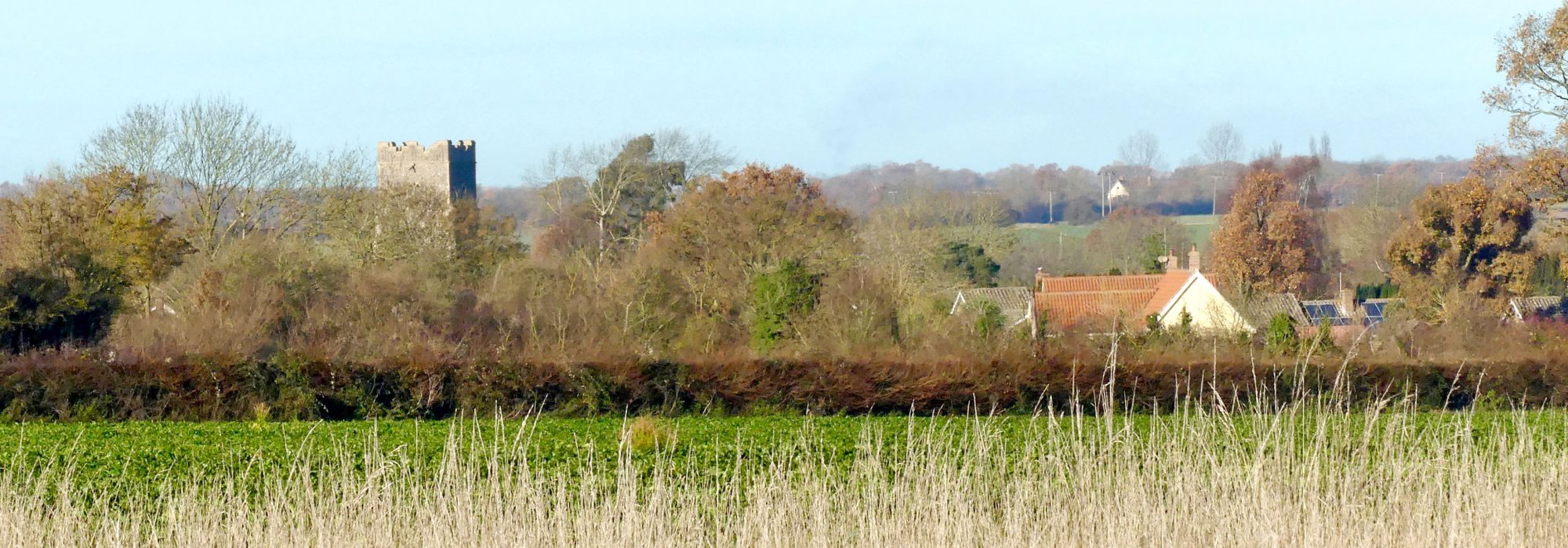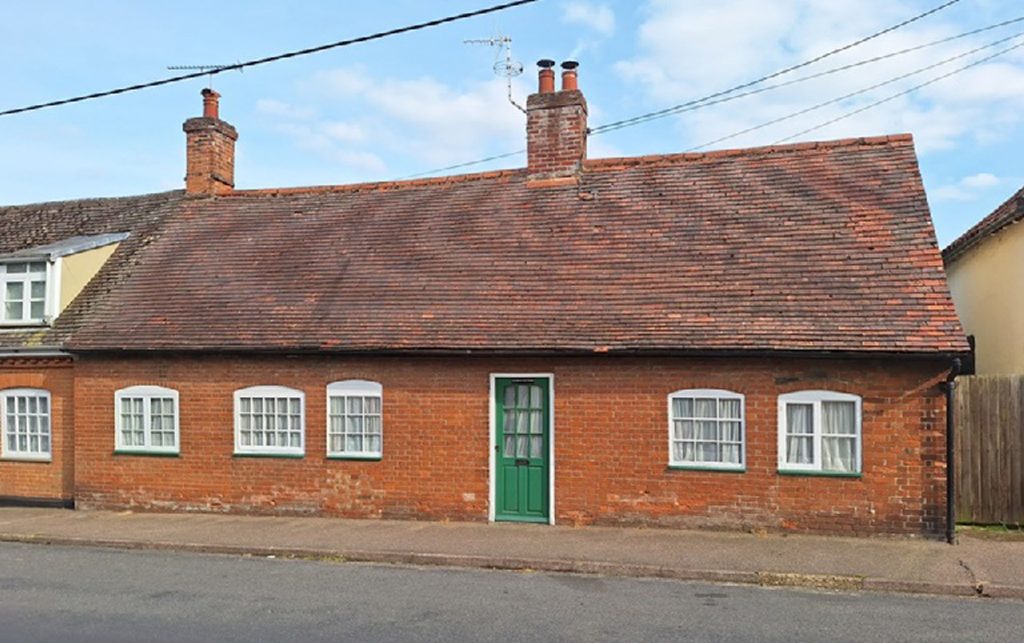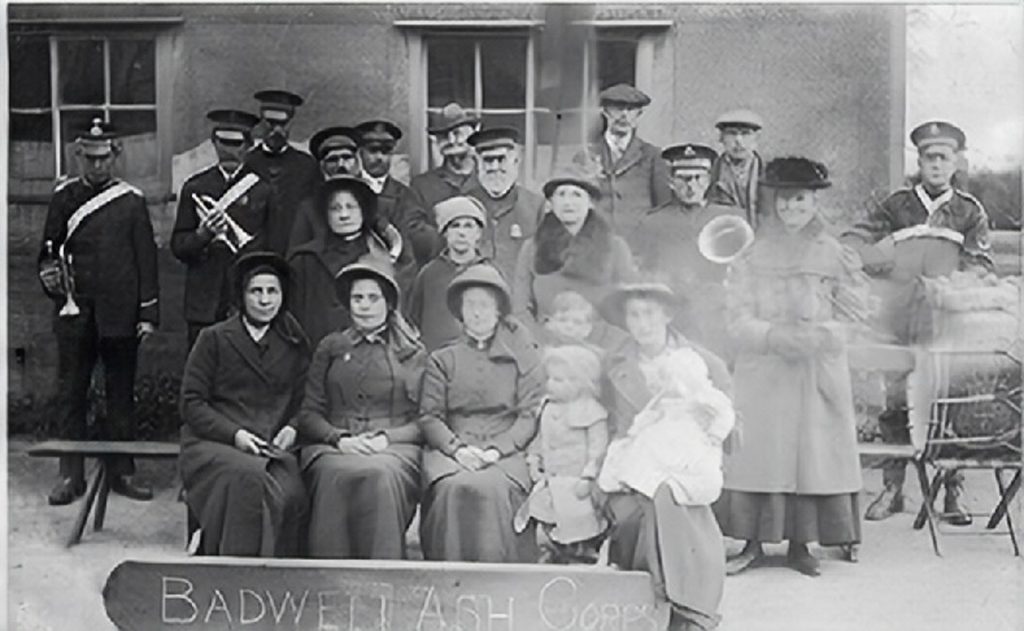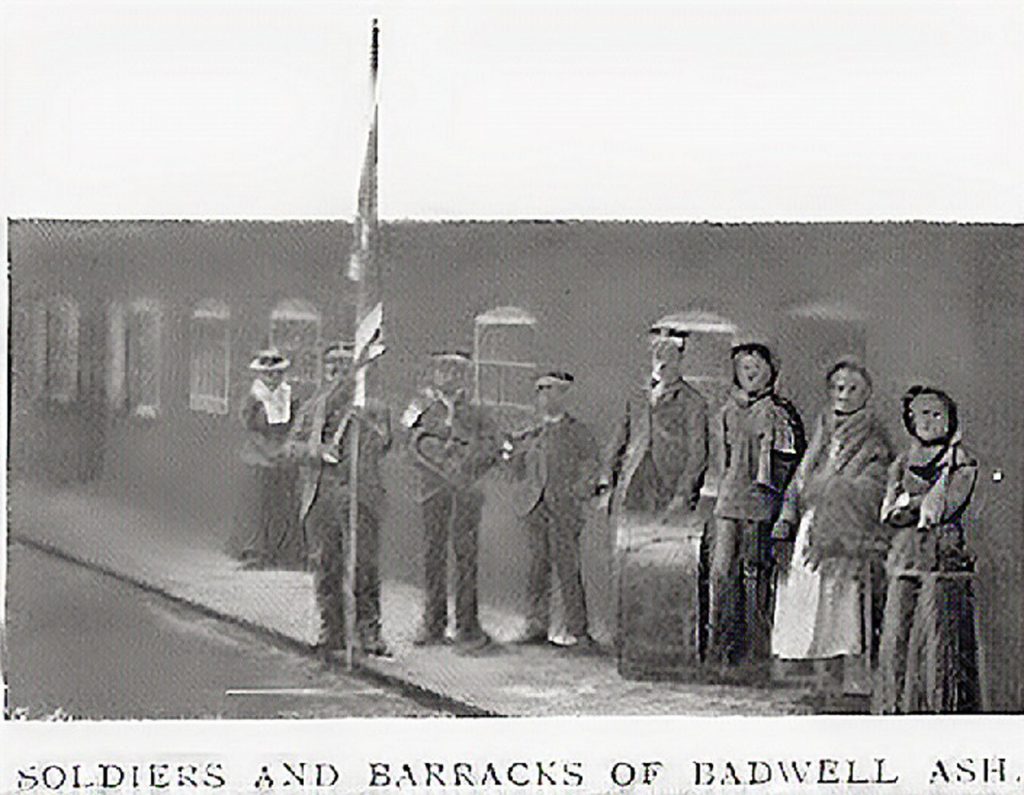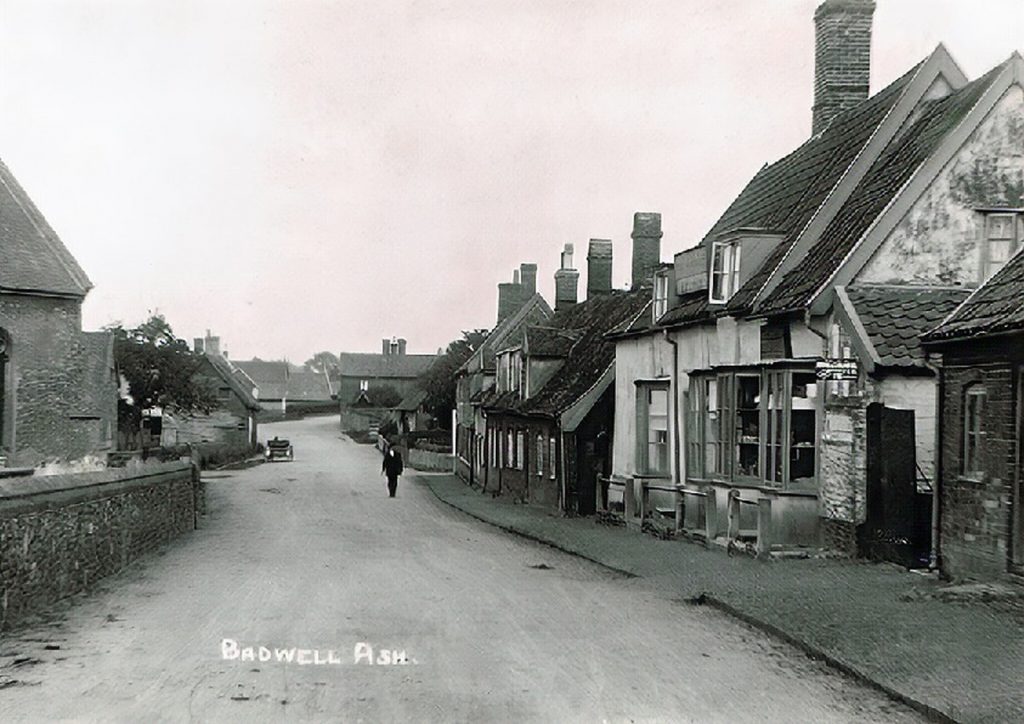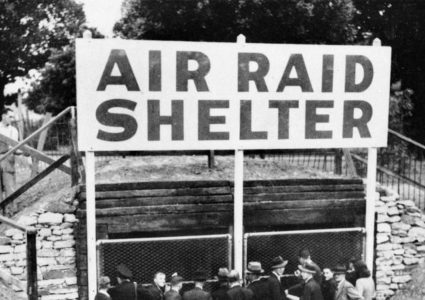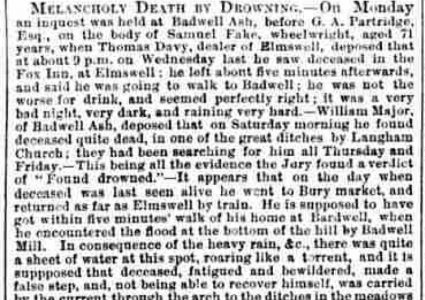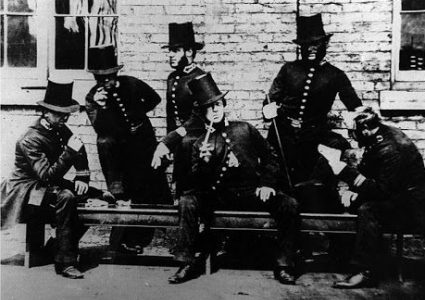- Church Cottage 2024
Church Cottage is situated on the south side of The Street in Badwell Ash immediately opposite St. Mary’s Church. From the exterior, the cottage belies its origins. For all intents and purposes it looks like a C19 building with its red brick walls and plain tiled roof but, enter inside, and it is obvious that this property was built many years before that, probably in the C16 or C17. This timber framed house contains an inglenook fireplaces with original Tudor bricks and there are many oak beams visable.
The cottage is not Listed as a Building of Architectural or Historical interest, however, it seems obvious from the interior that this was originally a timber framed cottage which had a brick “skin” added to it sometime in the late C19. Additionally, from the pitch of the roof it is probable that the cottage was thatched at some time and the thatch has been replaced with peg tiles. The original elm rafters that supported the thatched roof can be seen in the upstairs bedrooms. Before the cottage was modernised in 1975, the roof was covered with peg tiles.
The current owner has property Deeds going back to 1787 and it has an interesting history. It seems that this property could have been one of the few properties that survived the supposed “The Great Fire of Badwell Ash” which was reported to have happened in 1723.
The 1787 Deed is concerned with the sale of these properties in Badwell Ash between a Thomas Shaut, Robert Brooks and Francis Harrison. In that Deed there is reference to: …” All that adjoing to the said messuage or tenement containing by estimation half and acre more or less formerly in the occupation of Ralph Wells, lying and being in Badwell Ash aforesaid between the copyhold tenement formerly burnt down sometime since of Thomas Martin and afterwards Thomas Brett…..”.
Although there are no records held at the Suffolk Record Office that refer directly to a “Great Fire” in Badwell Ash, there is a record that could possibly relate to the aftermath of the fire. It is a Deed between Stebbing, Buck and Read of a “Messuage on Badwell Street, dated 1728, of several messuages of a burnt messuage”. This description together with the reference above implies that several houses had been burnt down prior to 1728. Perhaps the Deed from 1787 is the evidence that is needed to confirm that “The Great Fire” did actually happen?
A description in one of the Deeds held by the current owner dating from 1897 clearly shows that at one time, a portion of Church Cottage to the right hand side adjacent to Norwich House, was a Salvation Army Chapel or Barracks as The Army calls their meeting houses. The Deed, which relates to the sale of Church Cottage in 1902, has been signed by William Booth, the founder of The Salvation Army when their portion was sold.
2.The Badwell Ash Salvation Army in front of Church Cottage 1900.
The key figure in the Deed or Conveyance is an Elizabeth Laflin. The Laflin’s are a well-known and long-established Badwell Ash family. Elizabeth died on Nov 9th 1901 and this Conveyance is the sale of all the property belonging to Elizabeth to a James Roberts, who was, at the time, the Landlord of The White Horse Inn. The sale relates to what seems to be three parts of Church Cottage and the adjoining Harvey Cottage, as it is now known. Elizabeth, née Beaumont, had been given two of these three “messuages” as a marriage settlement by her father Abraham Beaumont when she married Hammond Laflin on Aug 1st 1870.
Elizabeth, now deceased, was represented by the trustees of her will who were Burton Dye Suttle and Edwin Bugg Copping. They are described in the Conveyance as the party of the 1st part, Abraham Beaumont (dec’d) is the party of the second part, General William Booth is the party of the 3rd part and James Roberts was the purchaser. The sale of the “fee simple“, or freehold was for the sum of £130 (£13,500 today) of which £23 four shillings and four pence (£2,400 today) was paid to William Booth as Trustee of the Salvation Army for that section of the cottage that was the Barracks.
The third property mentioned in the 1902 Conveyance was sold to Elizabeth by a Mary Hovell. Hovell is a very old family name from this part of Suffolk that can trace its ancestry back to the C13. What is now Harvey Cottage was bought by Henrietta Harvey in 1923 from James Roberts. Henrietta was Peter Harvey’s grandmother. Peter, a well-known local character died in October 2011 and is buried in the Richer Road cemetery.
The use of the property by The Salvation Army was brief. As a result of enquiries made to The Salvation Army Archive, a Salvation Army Corps in Badwell Ash was established in March or April 1887. The Badwell Ash Corps appears to have quite quickly ceased to operate as an independent Corps, instead being worked jointly with other local Corps such as Norton and Walsham le Willows.
One of the documents located at the Salvation Army Archive was The War Cry of the 19th February 1887. In it, it was noted that Badwell Ash was a new centre, under the Leadership of a Lieutenant Cattermole. And “……last Sunday, 4 souls came to The Lord.”
In the War Cry of the 2nd February 1901, it tells us that “Powerful meetings led by Ensign Eastland and Lieut. Cotrill. ….. The Lantern Service given by The Ensign was a grand success with 6 souls cried for pardon”
In the June 1902 issue of the Salvation Army magazine ALL THE WORLD which describes the “Barracks” of Badwell Ash at the time as ‘a little cottage with the upper room knocked away – six long seats, and the penitent form’. It also has a very small photo of the exterior of the barracks and some of the soldiers.
- Extract from ALL THE WORLD 1902
The article in ALL THE WORLD from 1902 describes a visit to this part of Suffolk that the “Circle Secretary” took starting in Liverpool and visiting Elmswell, Norton, Ixworth and Badwell Ash. It describes how from Ixworth they:
“Walk on to Badwell in the rain. Ah! How good it is to tramp the long brown road, rain in the face, wind blowing free and all the earth sending up a sweet smell as incense of its praise to its Maker! Tea is a country mile and half further. We are wet. What is to be done? Nothing to be had here says Sister Coxsedge (aged 72), tripping girlishly up and down in the puddles in an Army bonnet and a grey shawl. Any pub, asks the slangy scribbler? Yes- worse luck! Come on then! We go up to The White Horse (In Badwell Ash) and interview the motherly landlady. Will she give the four of us tea? Rather! An egg apiece, jam, milk, bread and tea at fourpence a head because “You’re The Army”. Motherly landlady (Mrs Roberts) says she has taken ALL THE WORLD for years, the daughter has THE YOUNG SOLDIER every week and THE WAR CRY is kept in the bar for the use of the customers. The Captain whispers that they always give to the open-air collection. Doing all this, why shouldn’t they go further and give themselves to Jesus, give up “The White Horse” or turn it into a temperance house and join The Salvation Army. With God, all things are possible.
Sister Coxsedge, until quite lately, had an eighteen-mile War Cry round. She tells us that she was saved 15 years ago on Easter Sunday. I was saved at The Army in this village.
Brother Hawes, saved six years, was a drunkard. “I have been in jail, I ha’ poached, stole, smashed, lied, turned out ‘o house many times and done almost everythin’ except murder. I don’t like to call it all back. Praise God! He’s put my past under the Blood. I tied to drown conviction of sin in drink, but I was always haunted.”
There is a rousing open-air. A couple of men riding past the circle with the Flag and drum cry “They’re waiting for The Coronation”! “Yes”, says The Brigadier “waiting for you to crown Christ in your hearts”
The Barracks is a little cottage with the upper room knocked away – six long seats and penitent form.
By 1923, Badwell Ash had merged with Walsham and Norton and in that year a new centre had opened in Walsham. It seems that the Salvation Army only stayed at Church Cottage for less than 15 years, merging with Walsham and Norton once the chapel in Church Cottage had been sold in 1902.
4.Church Cottage, next to Norwich Stores 1900
The last recorded mention for the Badwell Ash Corps that the Salvation Army Archive have in their records dates from 1924, when the hall of the joint Walsham and Badwell Ash Corps, located in Walsham, was registered for worship. Thereafter, there’s no mention of the Badwell Ash Corps, just that of Walsham.
